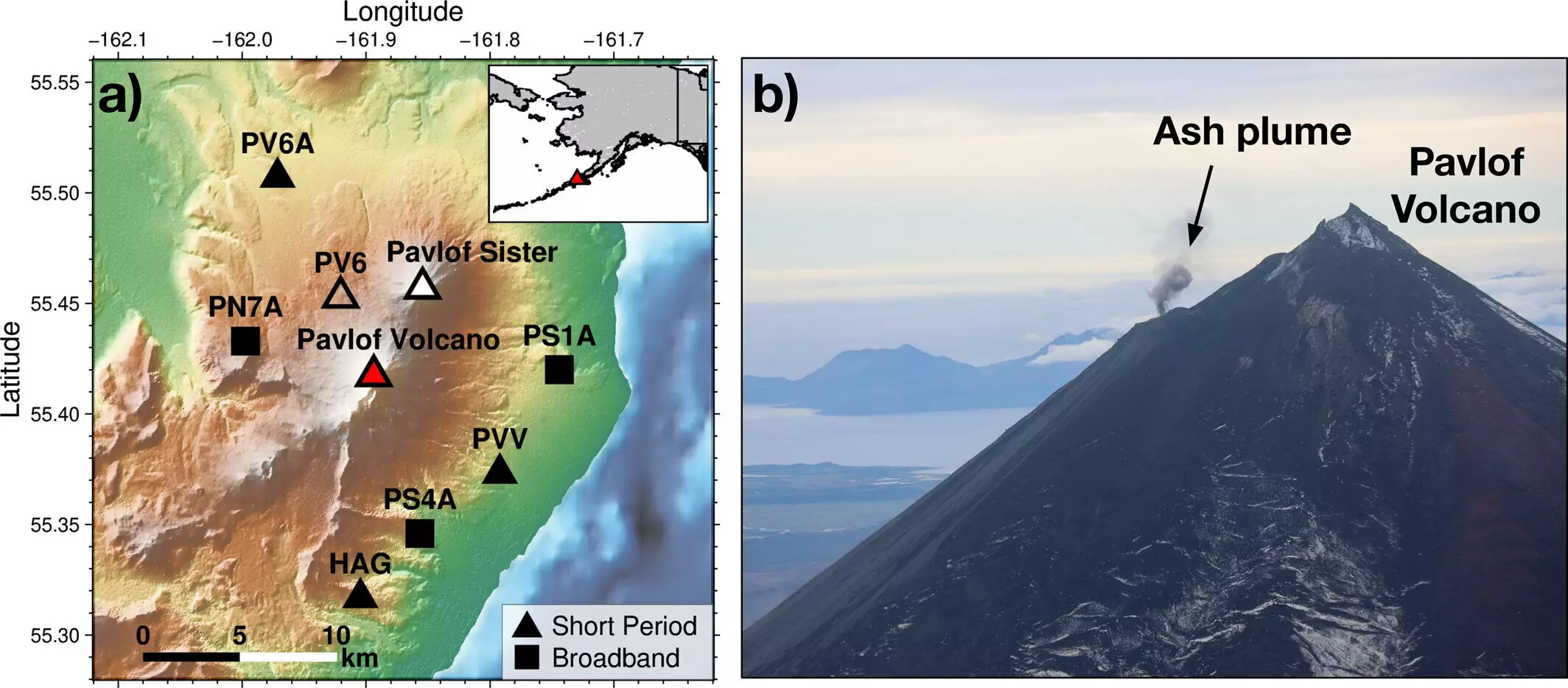Monitoring active volcanoes is essential for assessing potential eruptions and ensuring public safety. One of the persistent challenges faced by volcanologists is the nuanced detection of volcanic tremor—a continuous seismic signal indicative of subterranean magma or gas movements. This phenomenon often escapes manual detection due to its subtle manifestation, which contrasts sharply with the more distinct seismic shocks of volcanic earthquakes. Traditionally, monitoring efforts have relied heavily on trained seismologists to painstakingly analyze spectrograms—a process that is both labor-intensive and time-consuming.
The traditional methods employed by institutions like the Alaska Volcano Observatory (AVO) demonstrate the immense dedication required in this field. A team of duty seismologists sifts through vast datasets, identifying the faint signatures of tremor among clearer earthquake signals. As Darren Tan, a graduate researcher at the University of Alaska Fairbanks, pointed out, the sheer volume of data can mean that significant signs of volcanic activity might be overlooked during extended monitoring periods. The manual nature of this work has long been a bottleneck in timely responses to volcanic hazards, prompting the need for innovative solutions.
The Rise of Automation through Machine Learning
To address this critical issue, Tan spearheaded the development of an automated system that harnesses the power of machine learning. This method leverages algorithms that can analyze vast amounts of data, identify patterns, and classify seismic signals with minimal human intervention. As a branch of artificial intelligence that emphasizes data-driven learning, machine learning holds the potential to transform our approach to monitoring volcanoes.
The core of Tan’s system is its ability to process data from the diverse tremor signals recorded during the 2021-2022 eruptions of Pavlof Volcano. By creating a vast dataset of labeled spectrograms, the model learns to distinguish between different seismic events, including tremors, explosions, and earthquakes. The implication of this advancement is profound: the automation reduces the burden on seismologists, allowing them to focus on interpreting critical data rather than sifting through hours of recordings.
This shift in monitoring methodology signifies not just a technological leap but a reimagining of how seismic data can be understood and acted upon. Tan’s integration of machine learning serves as a bridge between traditional practices and a future where data interpretation becomes more efficient and timely.
Real-time Detection and Its Implications
One of the standout features of this automated system is its capacity for near real-time detection and classification of volcanic tremors. This rapid response capability is crucial during extended periods of volcanic activity, which can last for months or even years. By utilizing machine learning, AVO can prioritize its focus on significant tremor events rather than solely on the more obvious, impulsive earthquake signals.
Tan rightly notes that the human element remains critical in interpreting the automated findings. Even with advanced technology, human expertise is irreplaceable when it comes to contextualizing automated results within the broader scope of volcanic activity. The collaboration between machines and human experts creates a synergistic environment where technology enhances the capacity for informed decision-making in volcanic risk management.
The Broader Impact of Machine Learning in Geoscience
The implications of this technological breakthrough extend beyond volcano monitoring. Machine learning is a burgeoning field in geoscience, and Tan describes it as a “Wild West,” rich with opportunity but also fraught with the need for cautious application. As researchers continue to explore and develop machine-learning frameworks, there is an urgent need for rigorous validation and robust methodologies. Ensuring the reliability of these systems is paramount to prevent misinterpretation of data that could have dire consequences.
The collaborative efforts highlighted in Tan’s research illuminate the importance of interdisciplinary approaches to scientific inquiry. The involvement of researchers from AVO, including experts from the U.S. Geological Survey, exemplifies how collective expertise can fuel innovation. As machine learning technologies continue to evolve, they promise to unlock new insights into various geological phenomena, making the insights gleaned from Tan’s work relevant across a spectrum of environments—not just volcanoes.
The integration of machine learning into volcanic tremor monitoring heralds a new era for the field. By reducing the manual workload on seismologists and enhancing the speed and accuracy of volcanic monitoring, this system stands to significantly improve our preparedness and response to volcanic threats, underscoring the transformative power of technology in safeguarding communities beyond the edge of erupting volcanoes.

